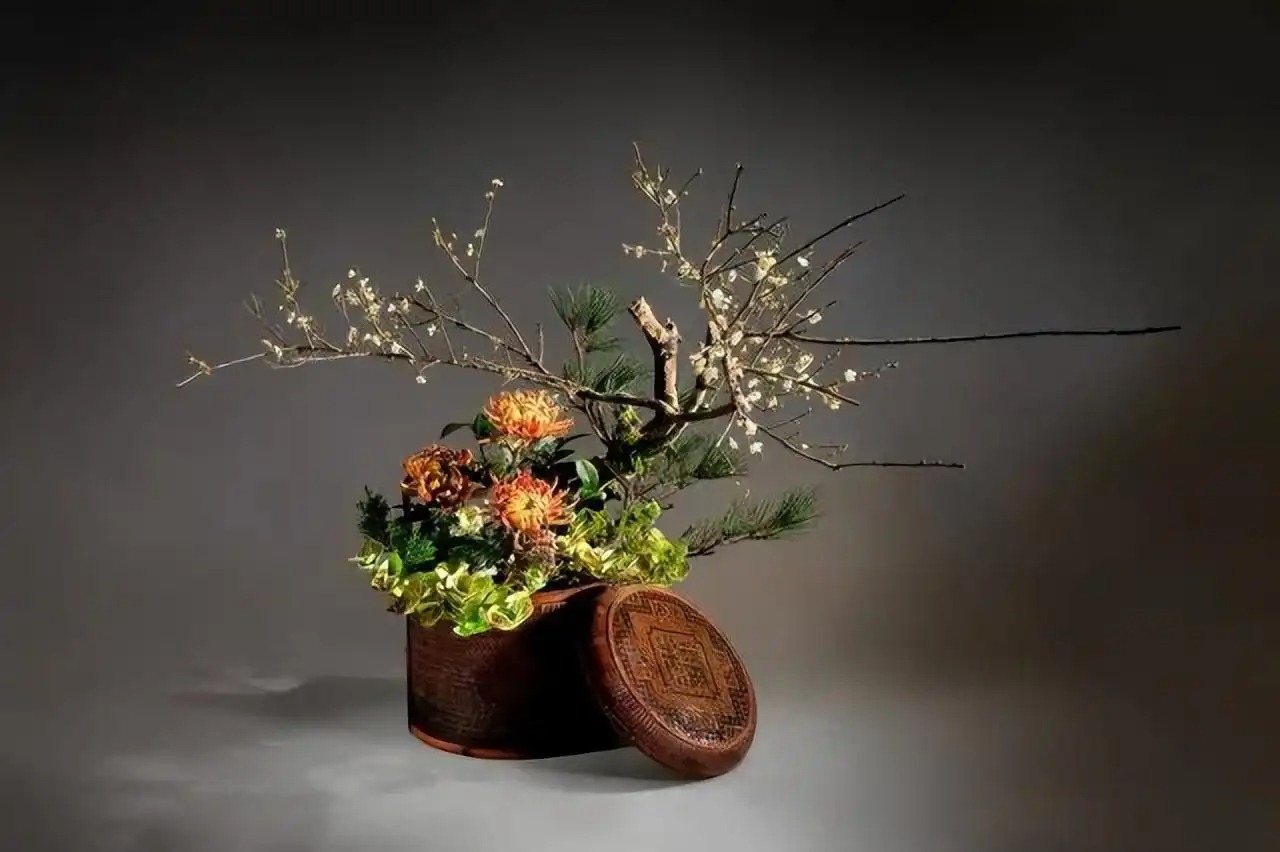One flower, one world; one leaf, one universe. Experience the intangible cultural heritage: the natural way of traditional Chinese flower arrangement

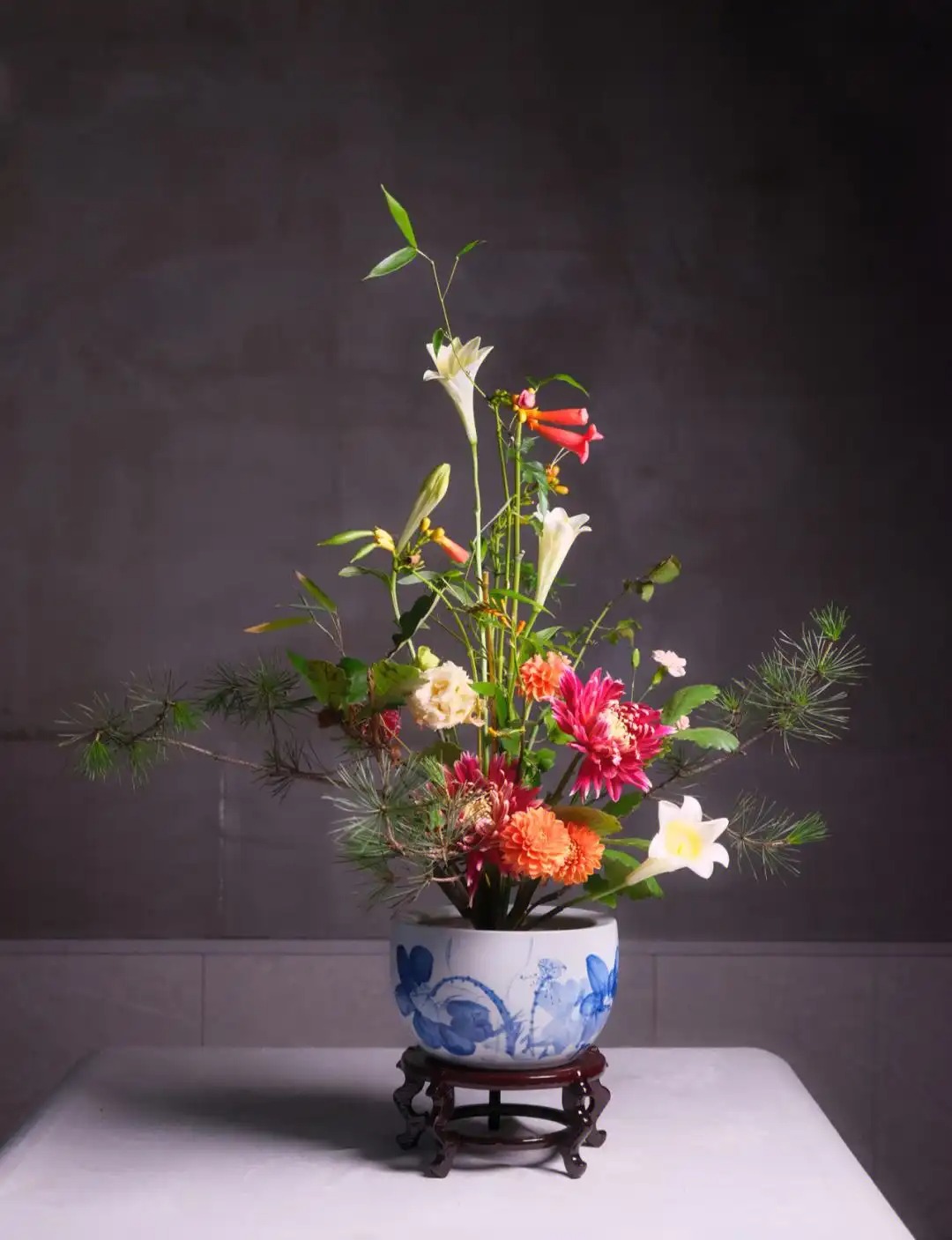
Traditional flower arrangement
Text丨Cognitive History
Editor丨Cognitive History
Preface
The traditional art of flower arrangement has a long history , is profound and extensive, and has a unique style. It is a treasure in the treasure house of Chinese traditional culture and art. It once occupied a place in the history of world flower arrangement and has had a wide and far-reaching impact.
This article discusses the history and style characteristics of traditional flower arrangement art, hoping to provide reference for promoting traditional flower arrangement art .
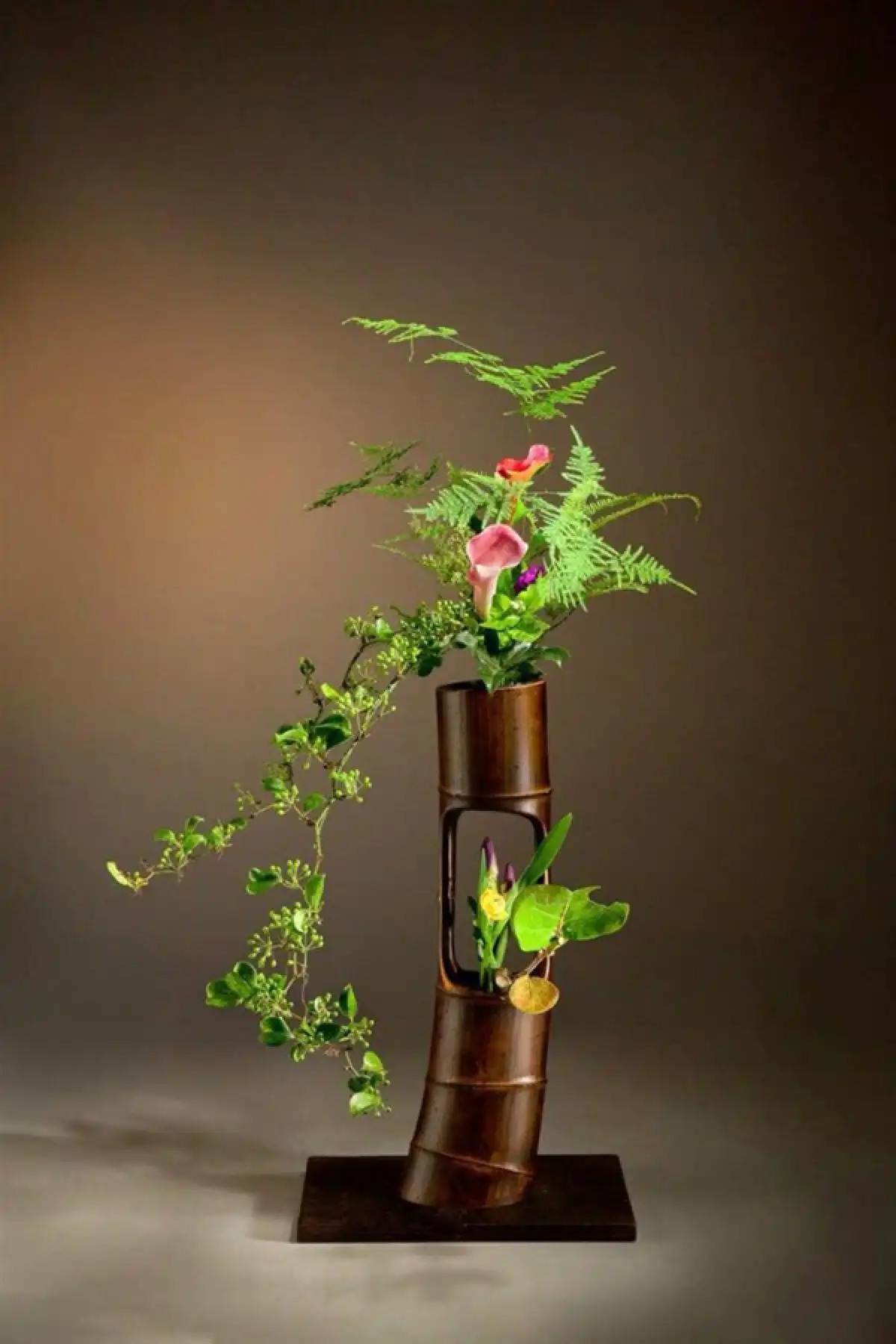
A brief history of traditional flower arranging
1. The origin of traditional flower arrangement
The traditional art of flower arrangement evolved from a folk culture in the pre-Qin period . Since the Neolithic period, our ancestors painted many beautiful flower patterns on five-leaf painted pottery , which was the awakening of primitive aesthetic consciousness.
According to the "Zhengfeng·Zhinwei" record:
"Weitu and the girl, they teased each other and gave each other a spoon of medicine."
In China, there is a saying that goes "wear a full head of chrysanthemums when you return home" and "wear plum blossoms to celebrate the New Year". The traditional art of flower arrangement developed from this form.
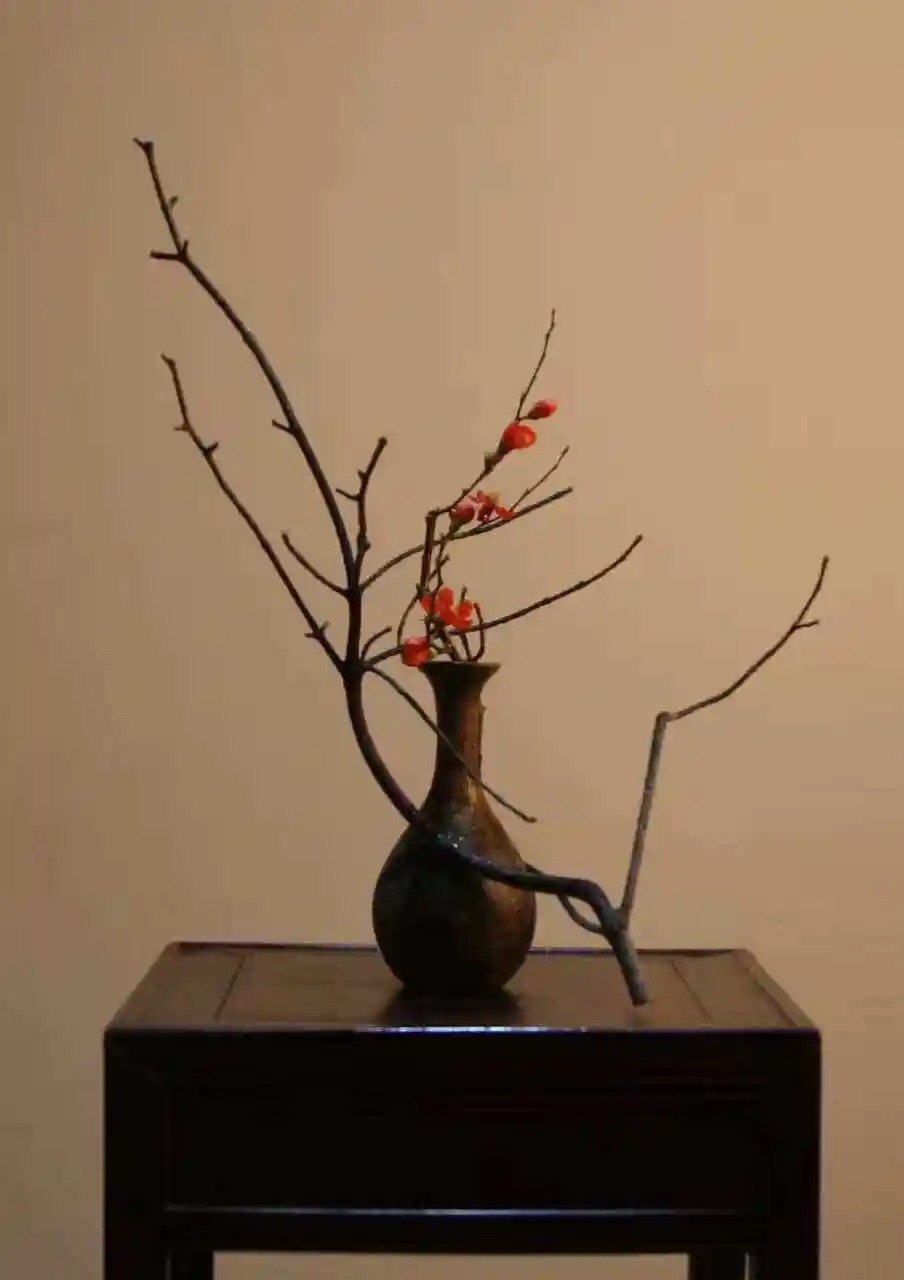
plum bossom
Folk flower arrangement shows the life and mental state of the people from different perspectives. It draws on a wide range of materials, has bright colors and rich connotations. Most of them are for the purposes of paying tribute to gods, worshiping ancestors, praying for blessings, and exorcising ghosts. The artistic style is simple and pure, concise and bright, and implies auspiciousness.
2. The primary stage of traditional flower arrangement
Although traditional flower arrangement originated from the folks, the flowers offered in Buddhist temples are mainly in the form of water-grown flower arrangements with a certain artistic form .
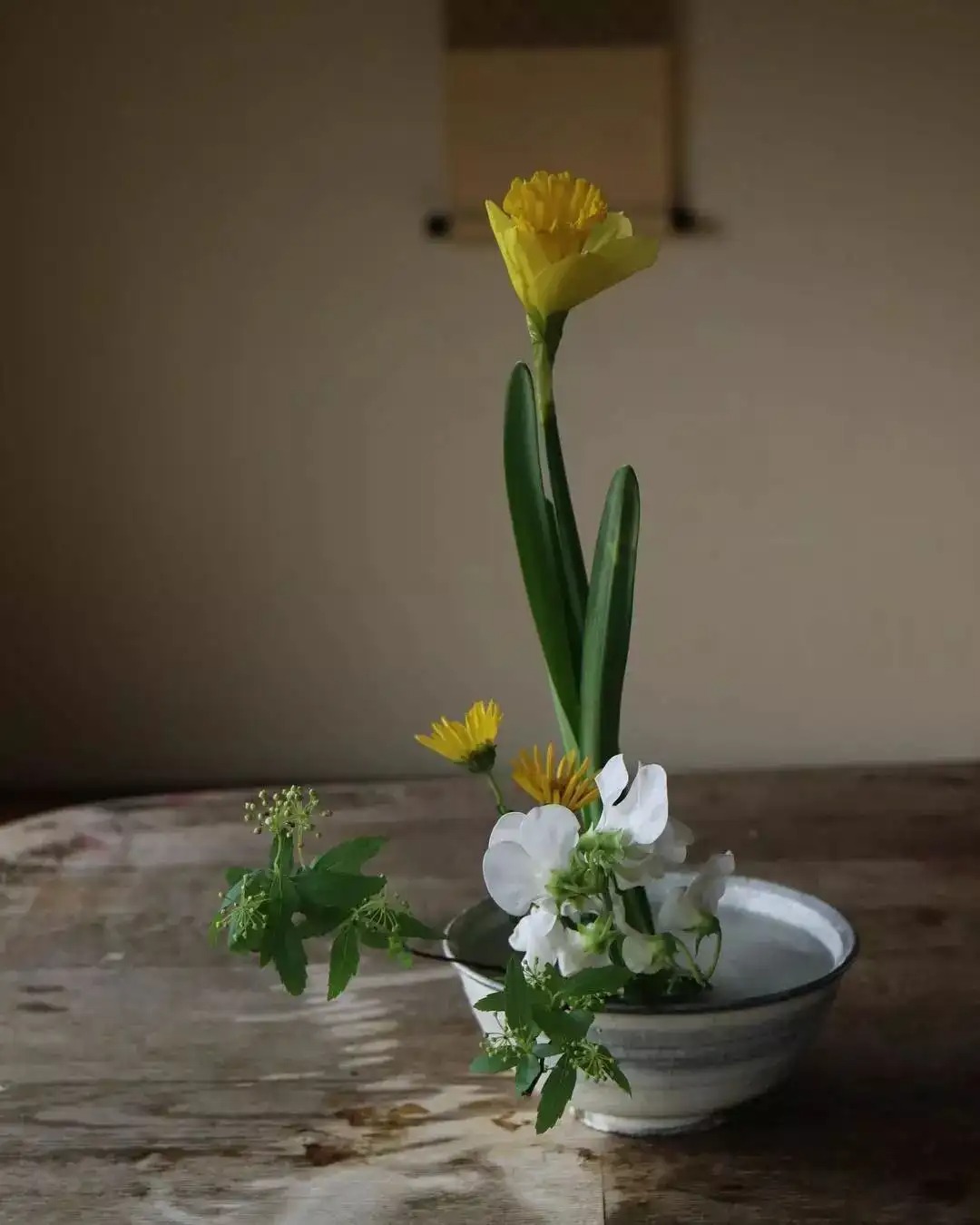
Water flower arrangement
The original ways of offering flowers in Buddhism mainly included "scattering flowers", "dish flowers" and "bottle offerings" .
"Bottle offering" is the oldest art of flower arrangement in the world. In the 5th century AD, "someone offered lotus to Buddha. The monks put water in copper pots and soaked the stems of the lotus to prevent the flowers from withering." This is the first record of "Bottle offering".
Buddhist flower offerings have a strong religious color , and are rustic, elegant, simple and unrestrained. They use lotus, willow branches and other plants as the main materials. Their shapes are ethereal, simple and symmetrical, and they are mainly in the form of vase flowers and plate flowers.
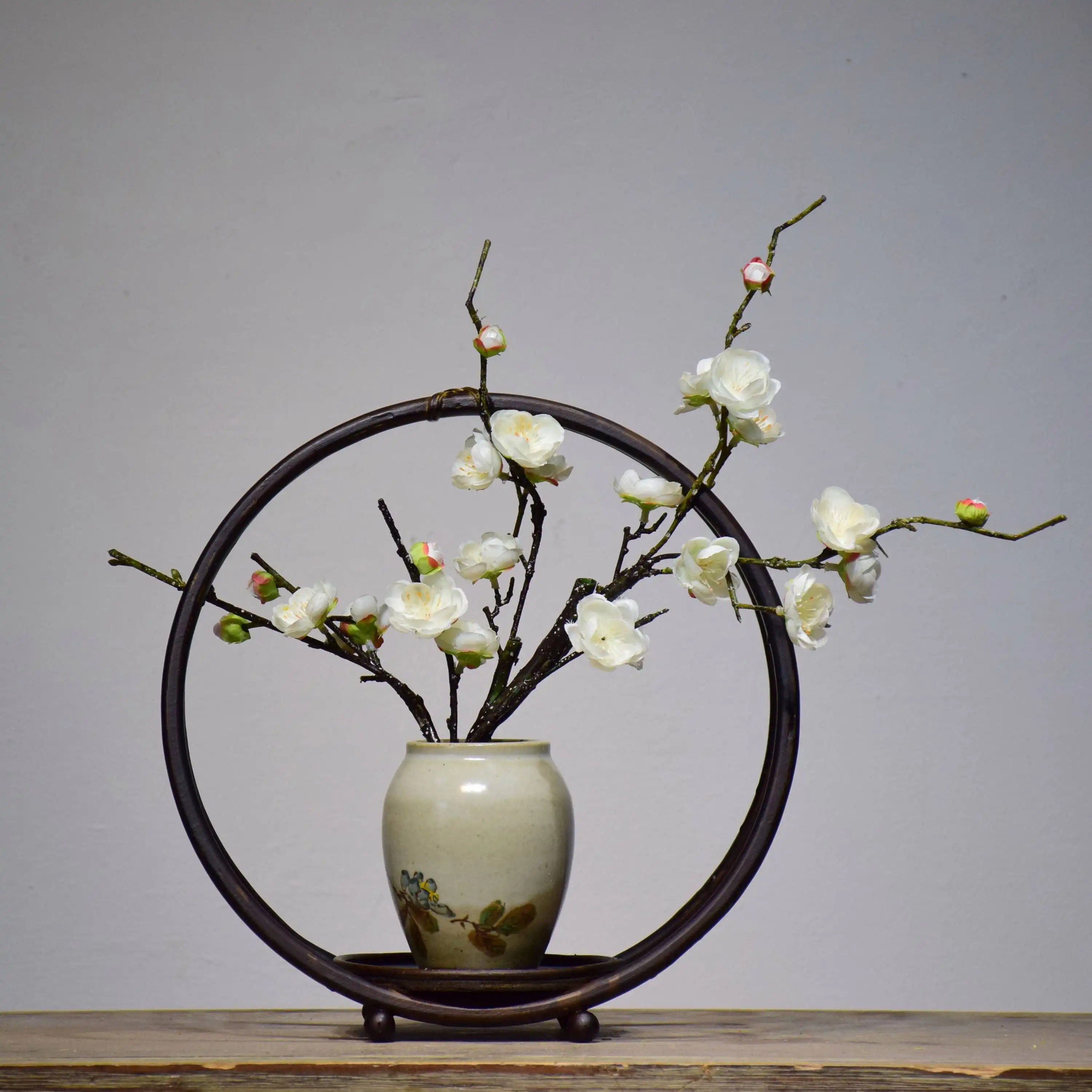
Flower arrangement in vase
3. The prosperity of traditional flower arrangement art
The Sui and Tang dynasties were the heyday of flower arrangement. The monarchs advocated it, and scholars and officials all liked flowers, and flowers were everywhere .
Flower arrangement has extended from folk flower arrangement and Buddhist flower offerings to court flower arrangement, literati flower arrangement and other forms. The court would hold peony flower arrangement festivals, and there are folk customs such as flower viewing, flower fighting and flower appreciation.
Luo Qiu's "Hua Jiuxi" gives a detailed description of the placement of flower arrangements, pruning tools, decorations, flower stands, etc. This is the earliest monograph on flower arrangement.
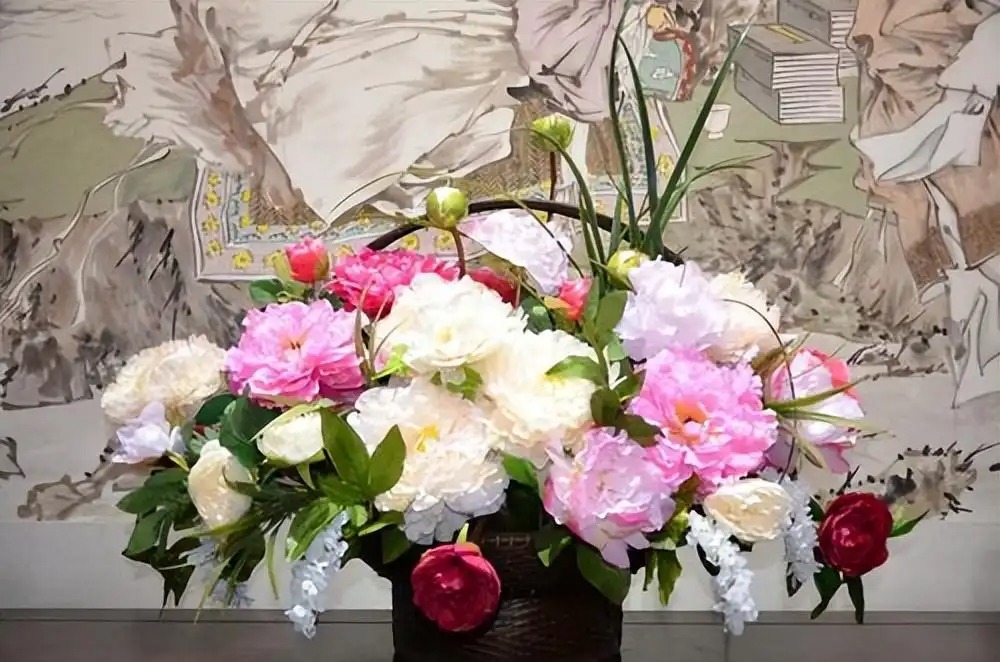
Peony flower arrangement
During this period, the art of flower arrangement had become very popular and gradually prospered. With the exchange of culture, art, and religion, the art of flower arrangement was introduced to Japan , which greatly promoted the formation and development of Japanese flower arrangement.
4. The development of traditional flower arrangement
During the Five Dynasties and Ten Kingdoms period, the art of flower arrangement continued to develop rapidly. The form of flower arrangement also broke the old convention of the Tang Dynasty that emphasized solemnity and pomp , and began to pursue natural interest, simplicity and rusticity.
There are more choices of flowers and more flower shapes, including vase flowers, plate flowers, pot flowers, hanging flowers, wall hanging flowers, basket flowers, etc.
During this period, people had unique insights into improving flower production technology, the most representative of which was the " Zhan Jing Pan " created by Guo Jiangzhou .
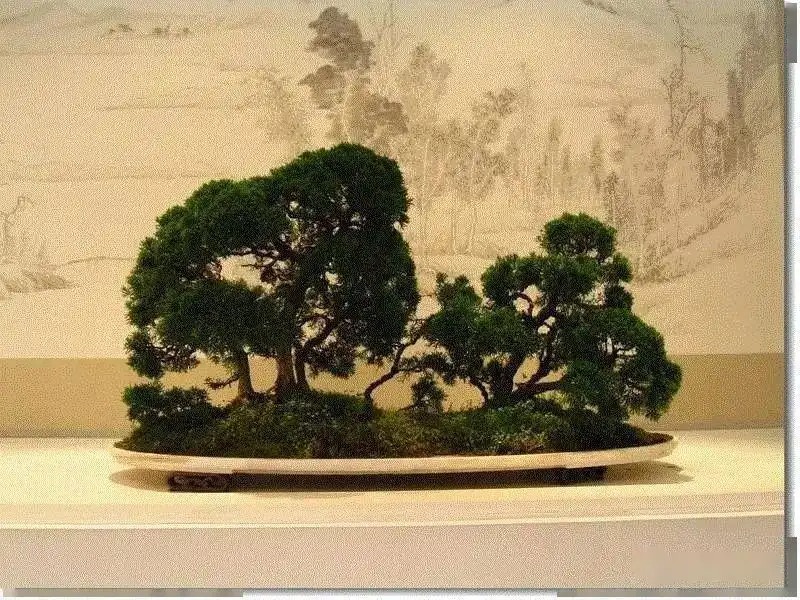
Scenery Plate
In the Song Dynasty, the art of flower arrangement was deeply influenced by "Neo-Confucianism", which attached importance to rational understanding of flower arrangement and emphasized content over form in order to express the creator's sentiments.
Most of the flowers used are high-quality pine, cypress, bamboo, plum, osmanthus and other flowers with rich connotations. The composition breaks the splendor of the Tang Dynasty and pursues the beauty of "clear" and "sparse" lines and artistic conception. The selection of flowers, the use of colors, the shape of the composition, the artistic conception of connotation, as well as the theory and technology of flower arrangement have reached a high level.
" Flower arranging, hanging paintings, making tea, and burning incense " are known as the "four arts of life". In that era, it was a very popular folk social ritual.
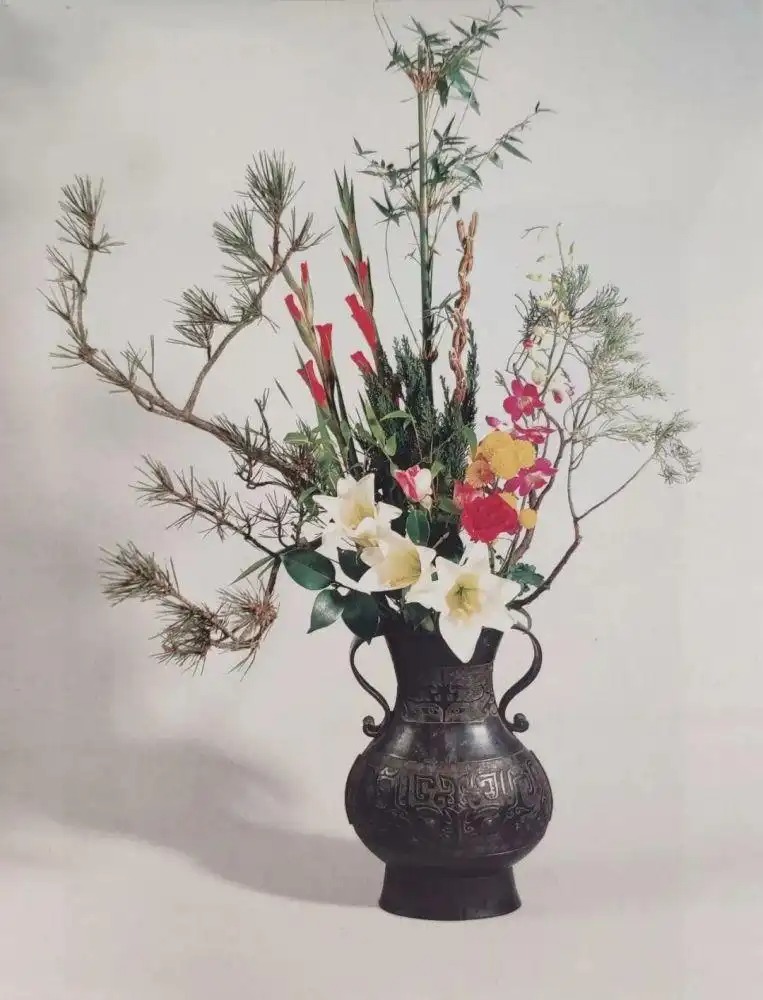
5. The maturity of flower arrangement
The flower arrangement of the Ming Dynasty marked the development of traditional flower arrangement to a relatively mature and perfect period. Both in terms of technology and theory, it had already formed a relatively complete system.
Its development can be roughly divided into three stages: In the early Ming Dynasty, it was mainly based on the prosperous "ideal flower" , which was solemn and gorgeous. It has a round shape, strict structure and profound meaning.
For example, the Ten Perfect Vase Flowers in the main hall highlights the characteristics of the flowers and emphasizes the meaning. The ten kinds of flowers represent perfection.
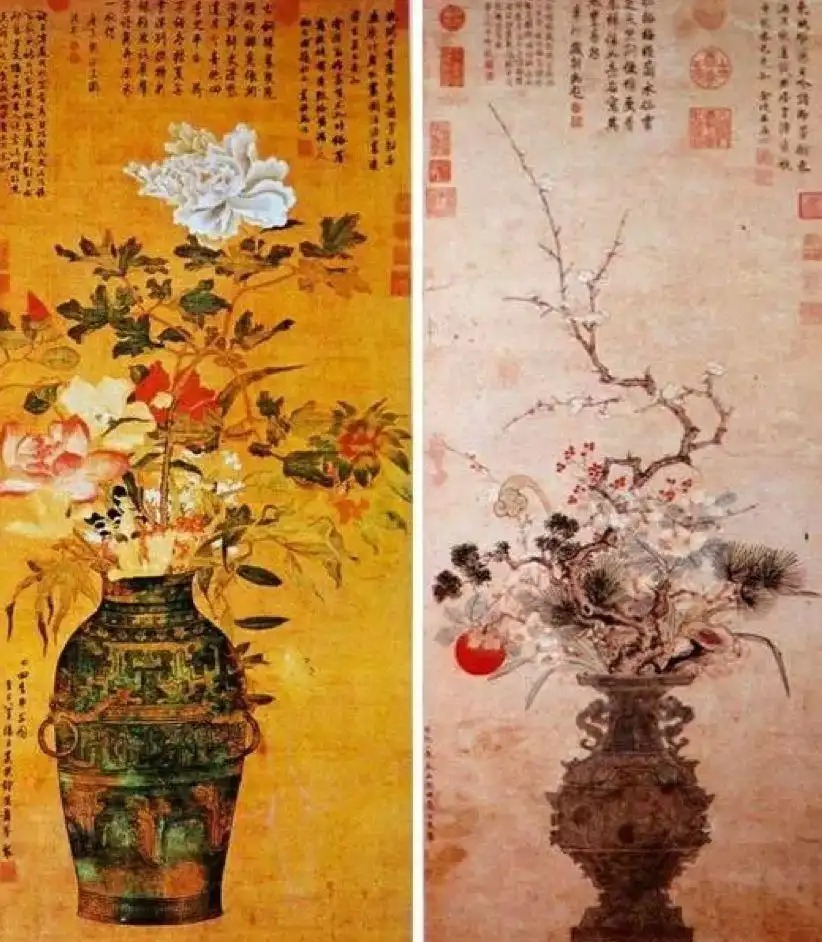
Ten-flower vase
By the middle of the Ming Dynasty, the elegant style was represented more by "literati flowers" , which advocated simplicity, freshness, and light colors, and did not pursue luxury.
By the late Ming Dynasty, the art of flower arrangement had developed to an unprecedented height, namely: the selection of floral materials required high standards of style and beauty; the composition of forms required aesthetic principles and proportional scales.
The arrangement of flowers is meticulous, with ups and downs , sparse and dense, and a natural look; it enhances the appreciation of flowers, advocates tea tasting, and is elegant and refined.
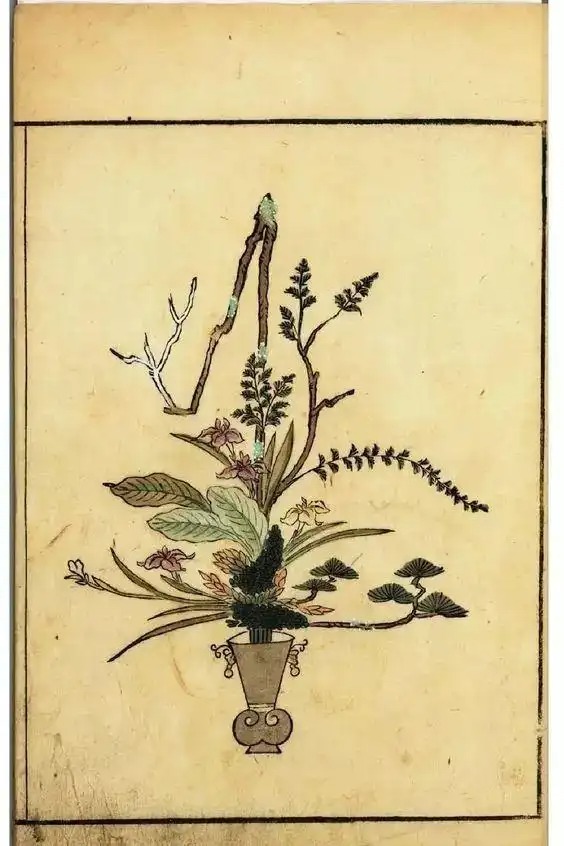
At present, the research on flower arrangement has become increasingly complete, with many monographs covering a relatively comprehensive range of topics, for example, "History of Vases" by Yuan Hongdao, "Catalogue of Vases and Flowers" by Zhang Qiande, "Eight Notes on Respecting Life and Enjoying Leisurely Time" by Gao Lian, and other influential works on flower arrangement research.
6. The decline of traditional flower arrangement
In the early Qing Dynasty, the flower market was prosperous and people's appreciation of flowers was no less than that of the Ming Dynasty. In addition, flower arrangement technology also made great progress. Shen Fu conducted an in-depth discussion on the techniques and methods of flower arrangement in the book. Among them, what he said about " the handles should be tight" is still praised by the flower arrangement community and is also the basic principle of traditional flower arrangement art creation.
In the late Qing Dynasty, due to the weakening of national power and the rise of bonsai , its status gradually surpassed that of flower arrangement, which had a certain impact on the development of flower arrangement art, and gradually tended to stagnation and decline.
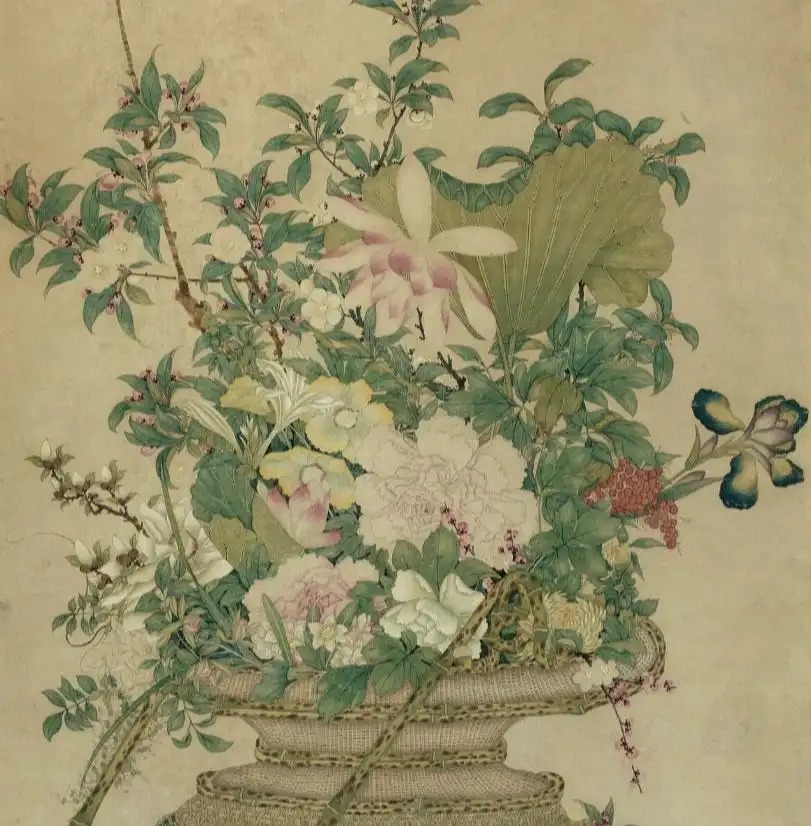
Flower Arrangement in the Qing Dynasty
In the late Qing Dynasty, flower arrangement gradually became silent. It was not until the late 1970s and early 1980s that the art of flower arrangement revived and developed rapidly with the reform and opening up and the development of gardening.
Characteristics of traditional flower arrangement style
1. Oriental sentiment that advocates nature
The traditional art of flower arrangement, influenced by philosophy and religion, advocates following the laws of nature .
Flower arrangement is a kind of floral art created by humans using branches, leaves, flowers, fruits, etc. from nature as materials, through clever ideas and composition principles .
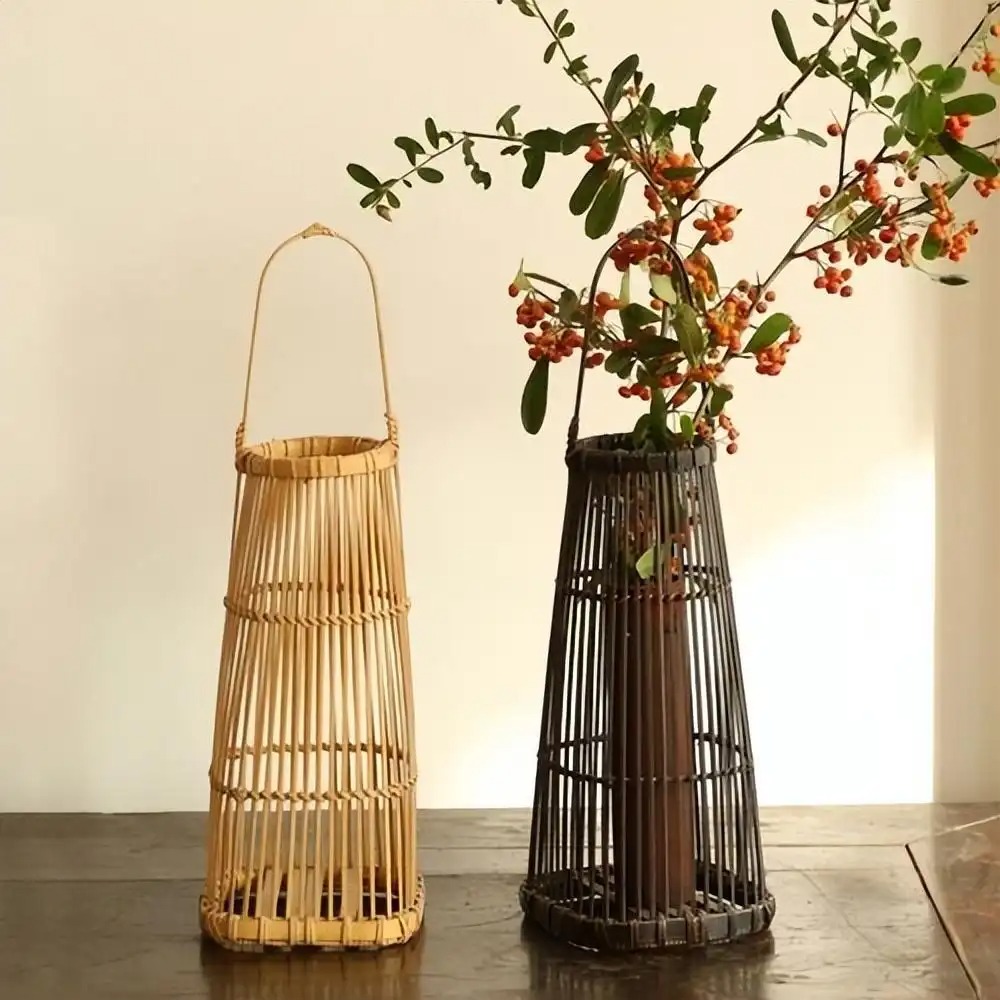
This requires flower arrangers to carefully study the living habits of flowers and plants, draw artistic essence from nature, inspire creative inspiration, and transcend nature .
As Zheng Banqiao, a famous Qing Dynasty painter, described bamboo:
“The bamboo in your eyes is not the bamboo in your heart, and the bamboo in your hands is not the bamboo in your heart.”
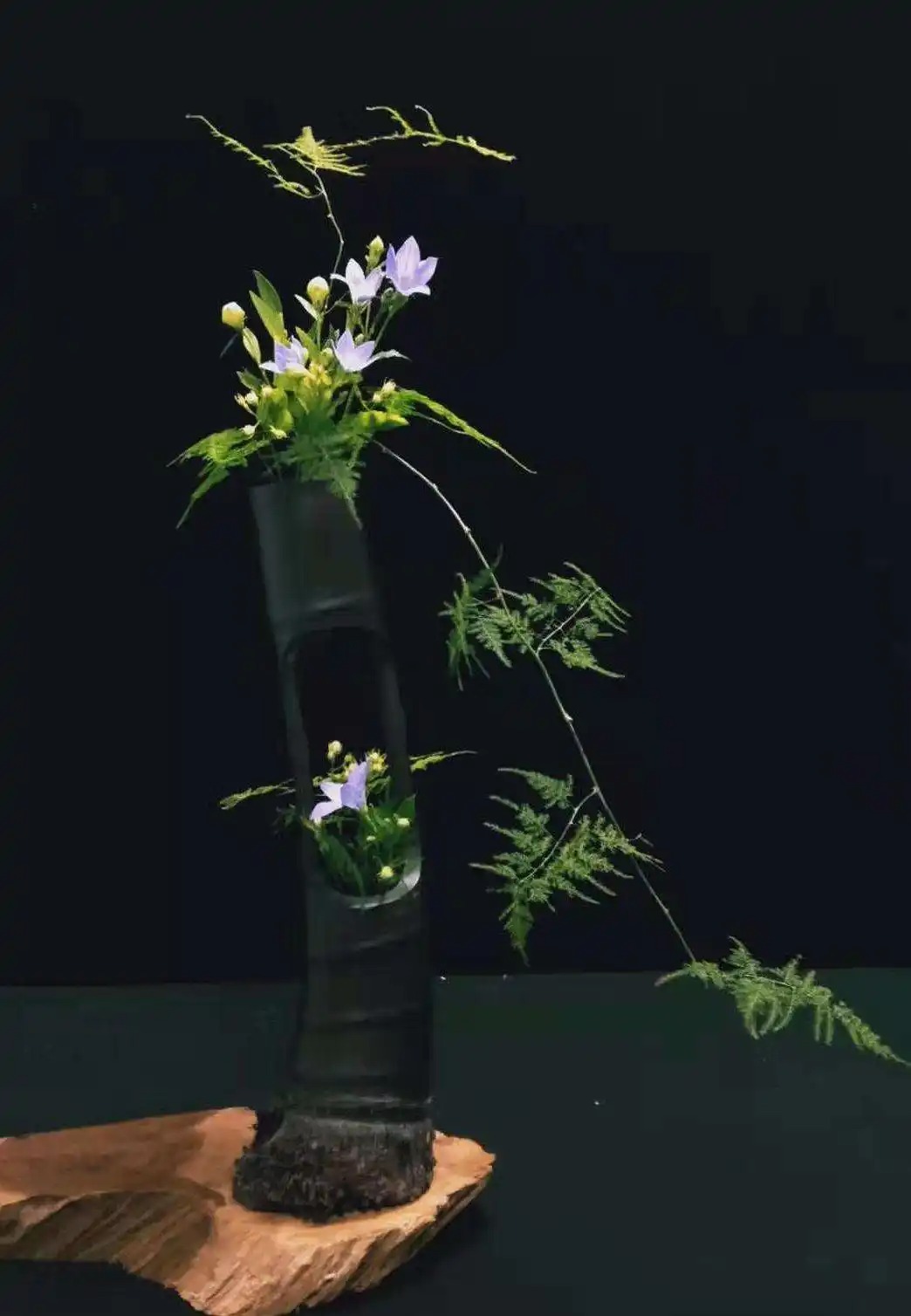
He first carefully looked at the natural scenery in the bamboo forest, and then after deep thinking, he finally sketched out a sketch of the " bamboo in his heart " in his mind, and then he started to paint, constantly modifying, supplementing and polishing in the painting, and finally created the masterpiece "bamboo in the hand" that surpassed the "bamboo in his heart".
This vividly interprets a mood that comes from nature but transcends nature, achieving an artistic realm that is man-made yet seems to be created by nature.
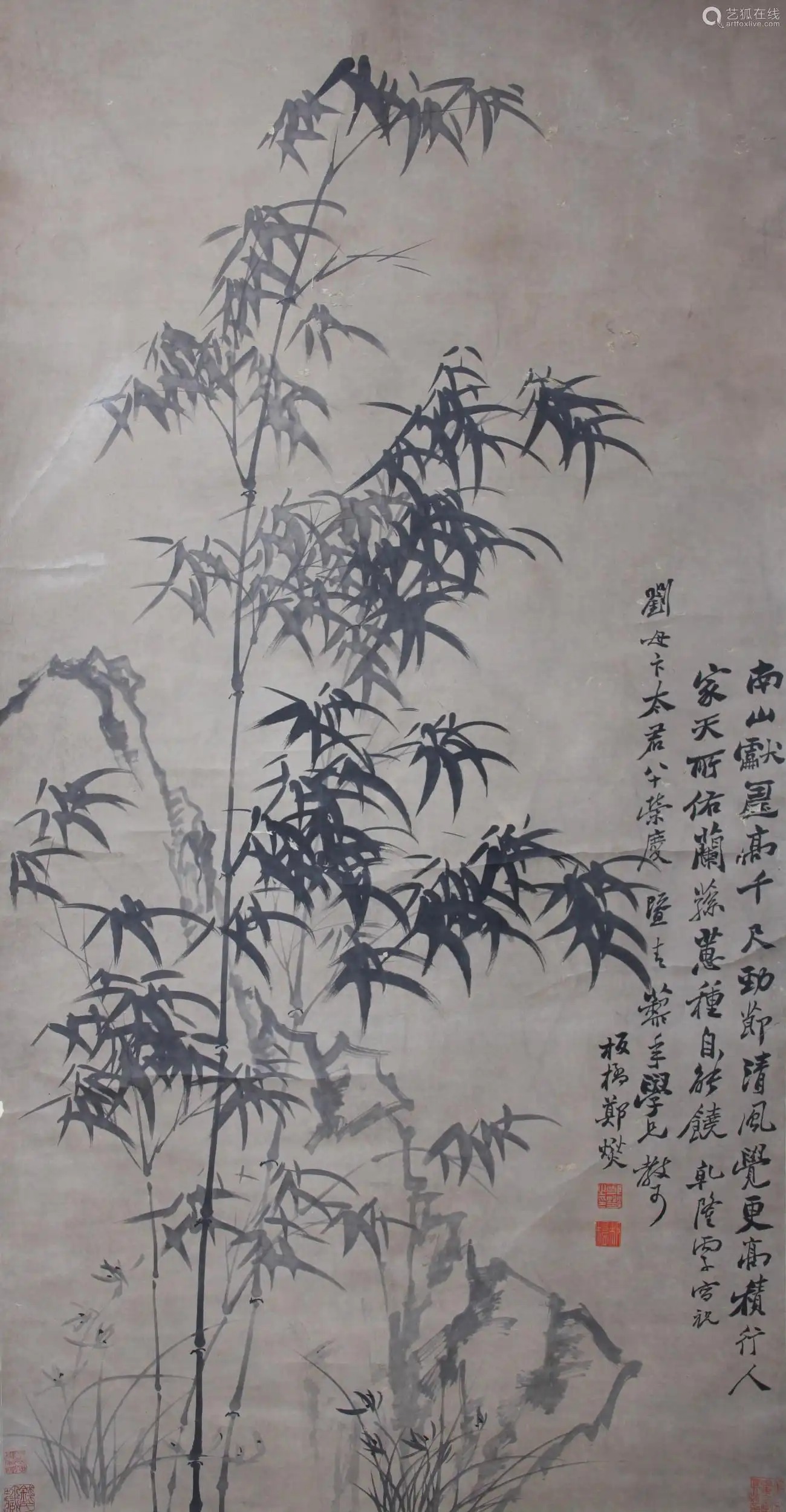
Zheng Banqiao--Bamboo
"Culture and art" are interrelated. This principle is also implemented in various aspects such as "creativity", "concept", "material selection" and "modeling" , and provides an important theoretical basis for traditional flower arrangement art.
2. Warm and elegant humanistic atmosphere
Under the influence of Confucianism and Buddhism, the traditional art of flower arrangement has developed an aesthetic concept centered on "goodness" , believing that everything has a soul, advocating " harmony between man and nature ", and focusing on treating plants with respect for human life.
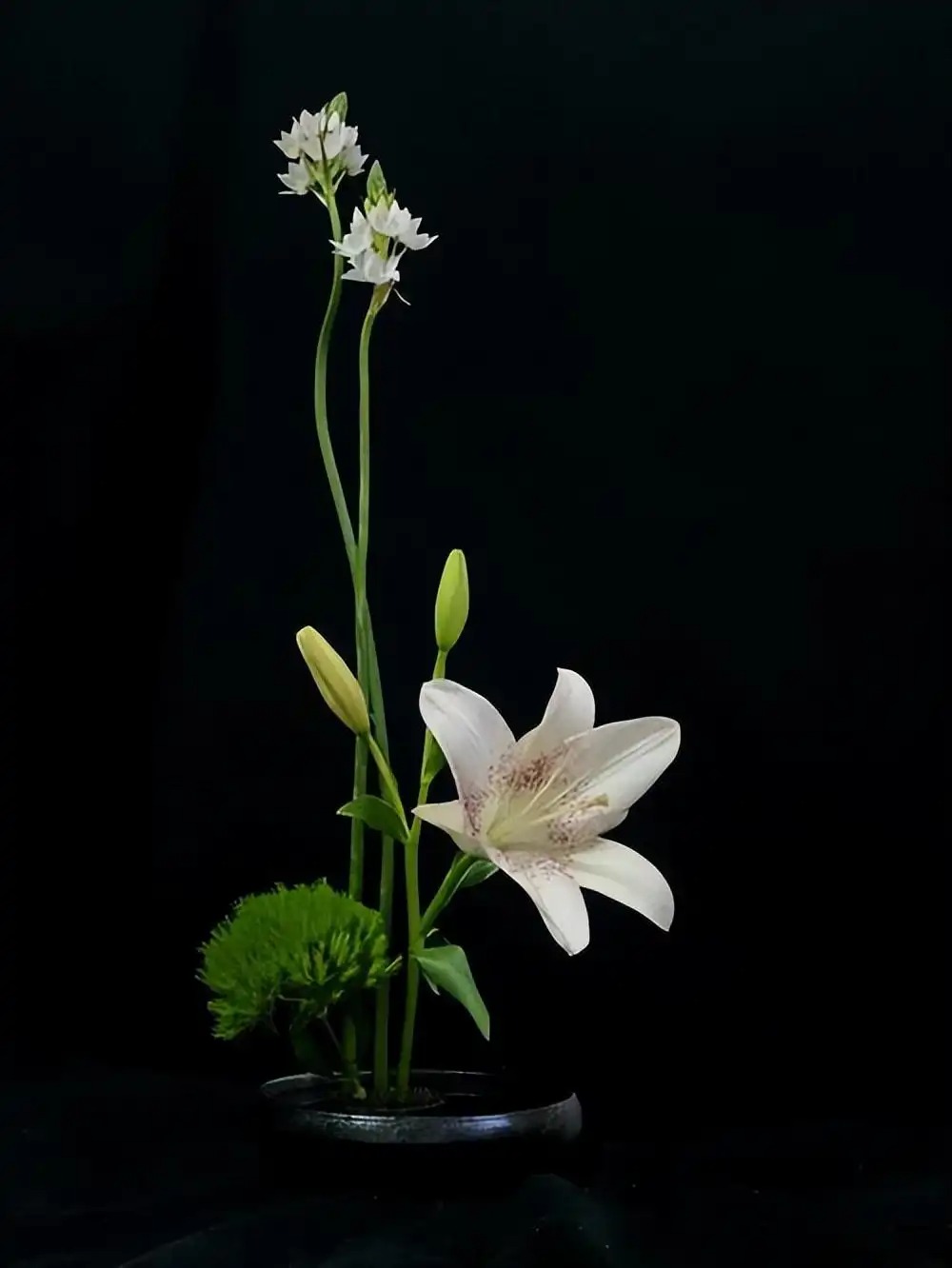
For example, the three main branches in traditional flower arrangements represent heaven, earth, and man . Ancient monographs on flower arrangement inspired humans to observe nature carefully and thus improve their state of mind.
Learn the principles of being a human being and doing things from the nature of flowers, plants and trees;
We can learn how to face the changes and impermanence of life from the spring, summer, autumn and winter of flowers, plants and trees , and give flowers many beautiful symbolic meanings.
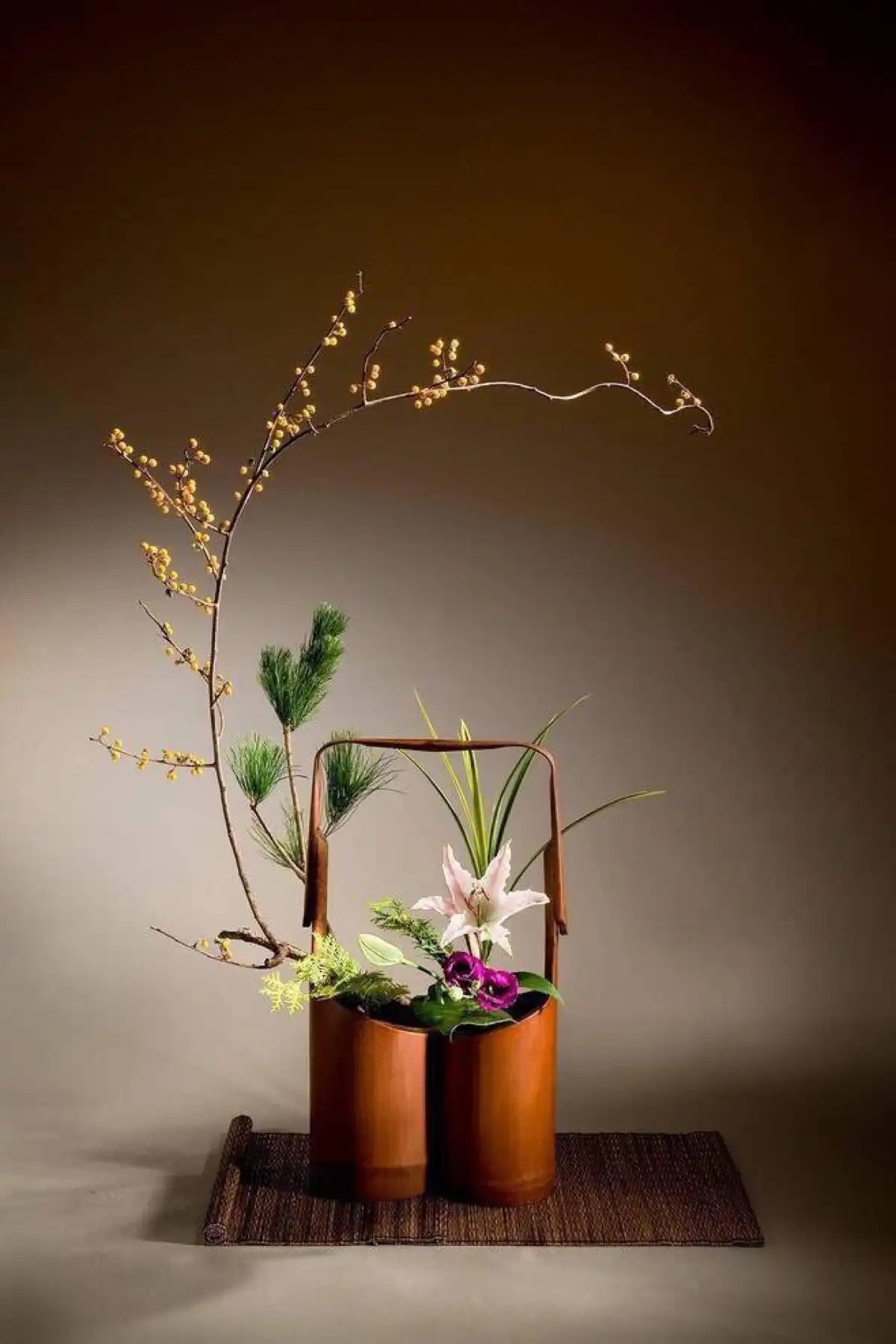
Flowers can be personified and deified to express one's aspirations. They can also be used to express feelings and extend interest.
For example: in ancient times, willow branches were used to express farewell, lotus flowers were used to represent a gentleman who is untainted by the mud , bamboo was used to symbolize the integrity of literati, and so on. Each flower has its own unique meaning, which fully expresses the rich humanistic atmosphere.
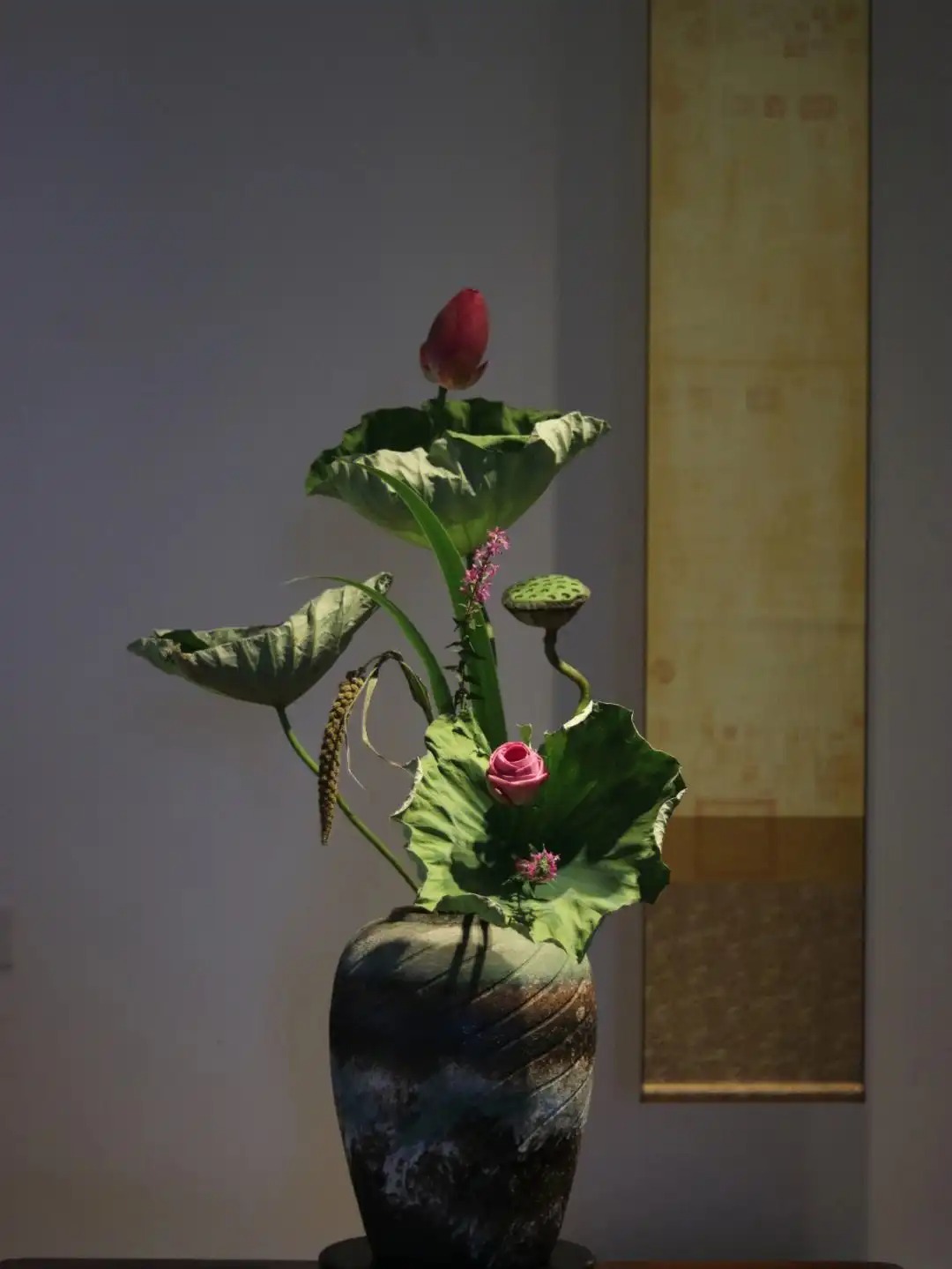
lotus
3. Expression of profound and far-reaching artistic conception
In the traditional art of flower arranging, " learning from nature outside and inspiring from the heart inside " is the creative principle of traditional flower arranging. "Learning from nature outside" refers to imitating nature, while "inspiring from the heart inside" refers to incorporating one's rich thoughts and emotions into flowers, so as to achieve the purpose of "using flowers as shape and borrowing flowers as meaning" .
Yuan Hongdao of the Ming Dynasty said in "The History of Bottles":
“The beauty of flowers lies in their colors, and people can imitate their colors.”
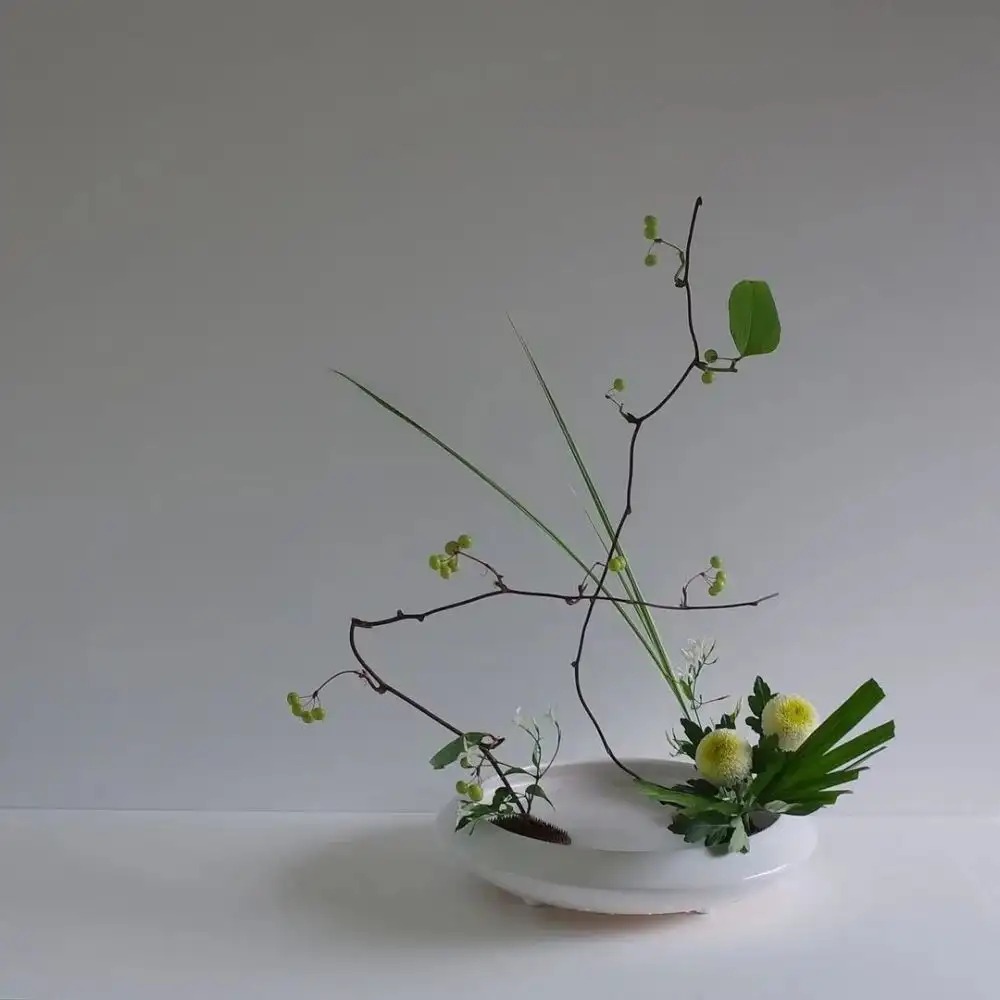
In other words, the beauty of a flower lies in its soul . The color of a flower can be imitated, but the spirit of a flower cannot be imitated. It must be experienced with the heart.
In limited works, the artistic conception of poetry , the composition of painting and other methods should be used to express infinite and profound meanings, so as to create a scene beyond the scene , an unexpected meaning , which will give people a feeling that "the text is finished but the meaning is still there", and the artistic conception of "the spirit is better than the form, and silence is better than sound".
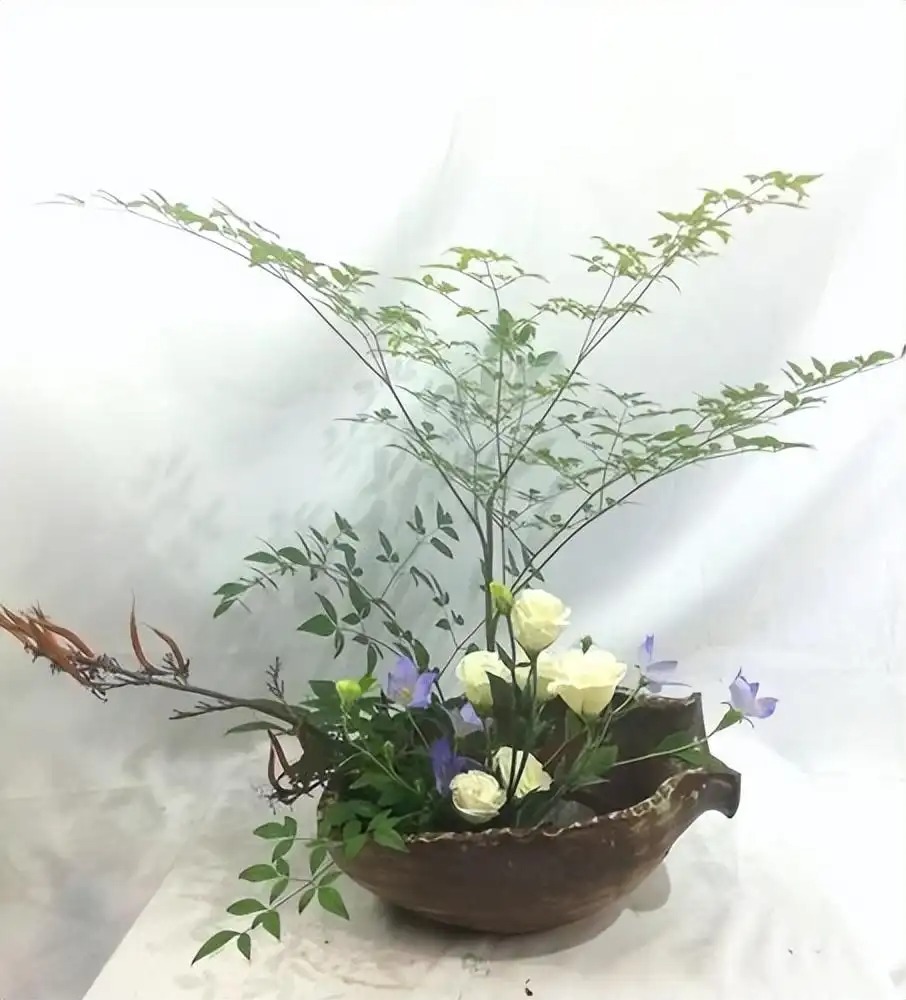
4. Colorful line shapes
Traditional flower arrangement is based on lines, which determine the height, width and depth of a painting, and express the rich artistic conception and emotions of the work.
Traditional flower arrangement is good at using wooden branches to shape lines, and expressing beauty and meaning in various senses through the various postures of the branches, incorporating all aspects of nature, all things in the world, wind, rain, thunder and lightning, joy, anger, sorrow and happiness.
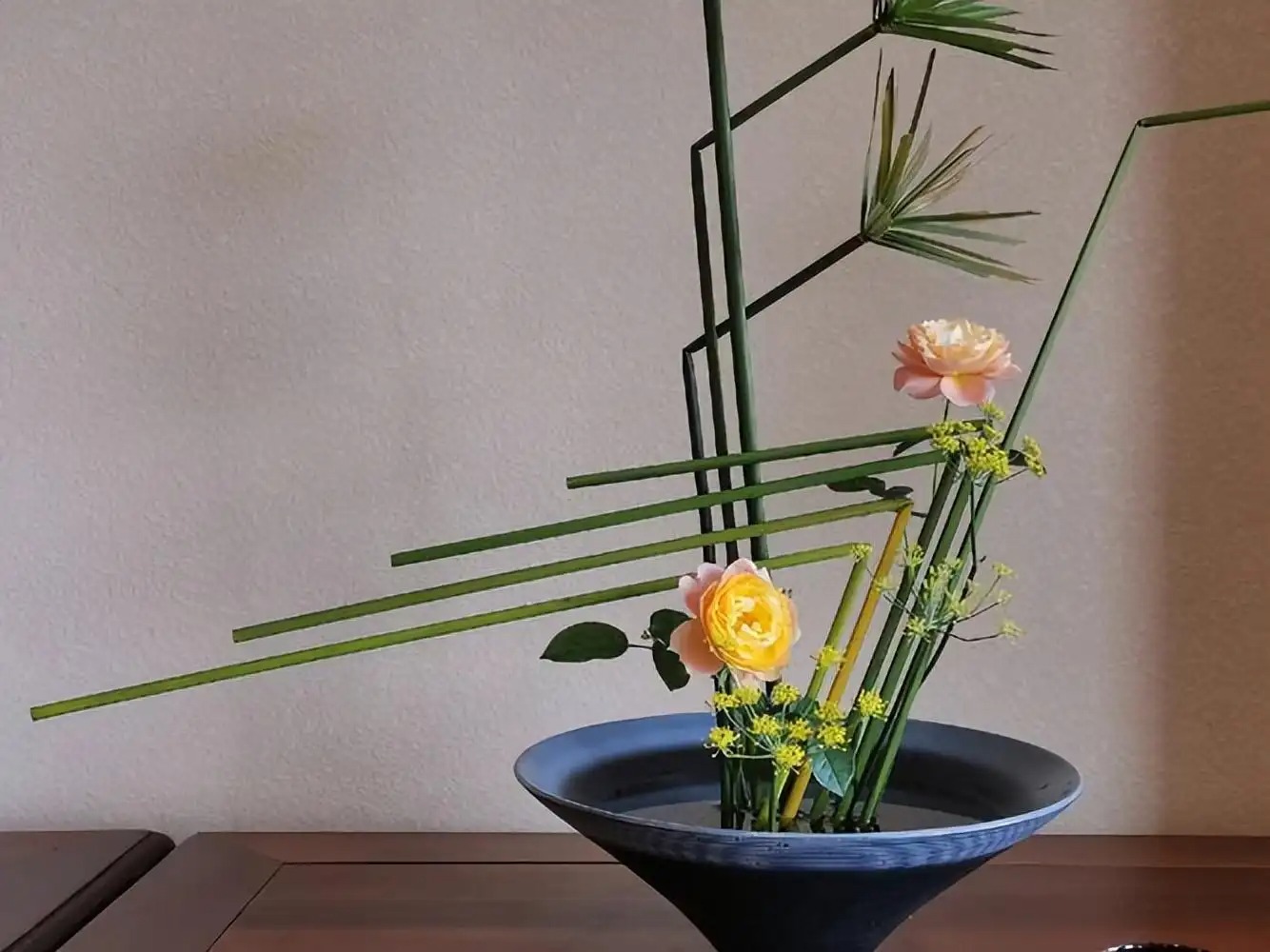
The expression of lines is very rich, some are powerful, some are soft, some are flowing, and some are winding, presenting an artistic world where every leaf is a world and every flower is a universe .
If you want to express the theme of reverence, fortitude, uprightness and majesty, you can choose straight bars.
To express soft, beautiful or magnificent themes, it is appropriate to use curved lines, etc.
In flower arrangement works, special attention should be paid to conforming to the natural charm of plants in terms of line shape , such as the elegance of weeping willows, the gracefulness of lotus flowers, and the sparse shadows of plum blossoms.
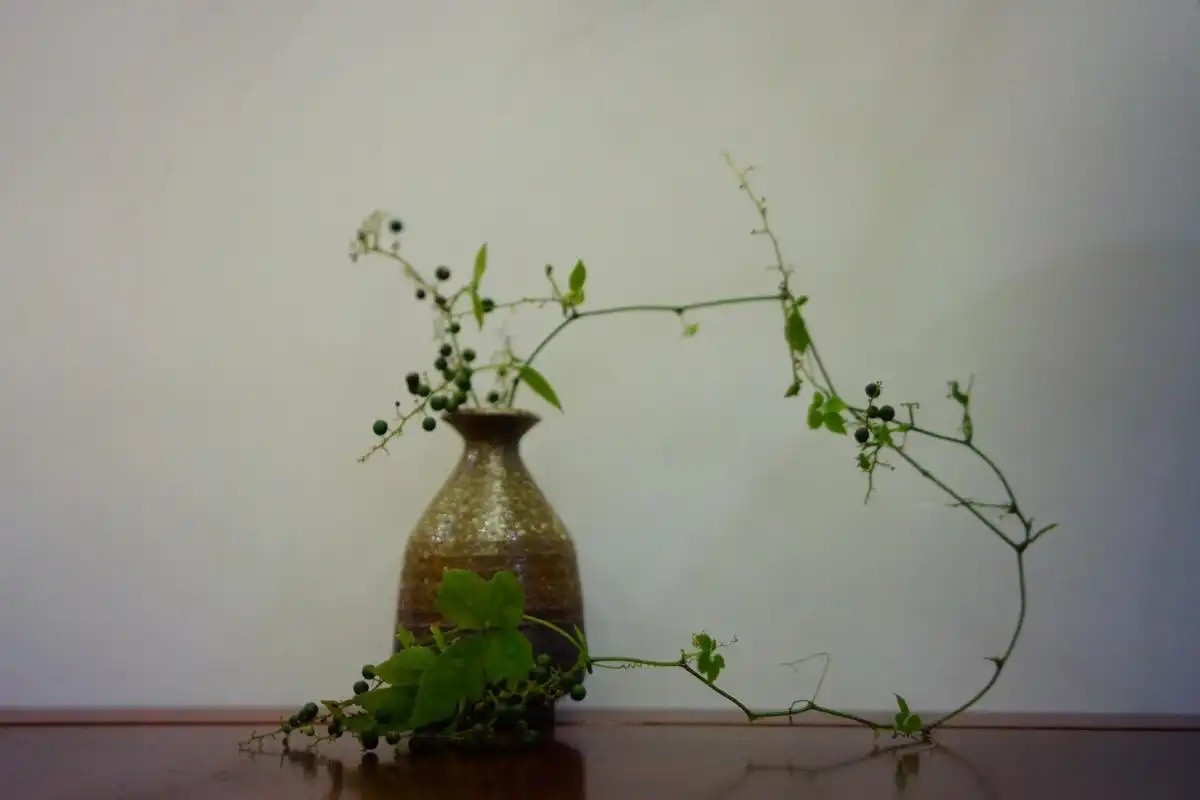
5. Coordinated and unified environment layout
In his book Six Records of a Floating Life - Leisurely Memoirs, Shen Fu of the Qing Dynasty once had a profound insight into the setting of a flower arrangement:
It depends on the size of the table. Three to seven bottles are allowed on a table. If there are more, they will be indistinguishable and look like chrysanthemum screens in the market. ..."
This shows that the background design of flower arrangement is very important.
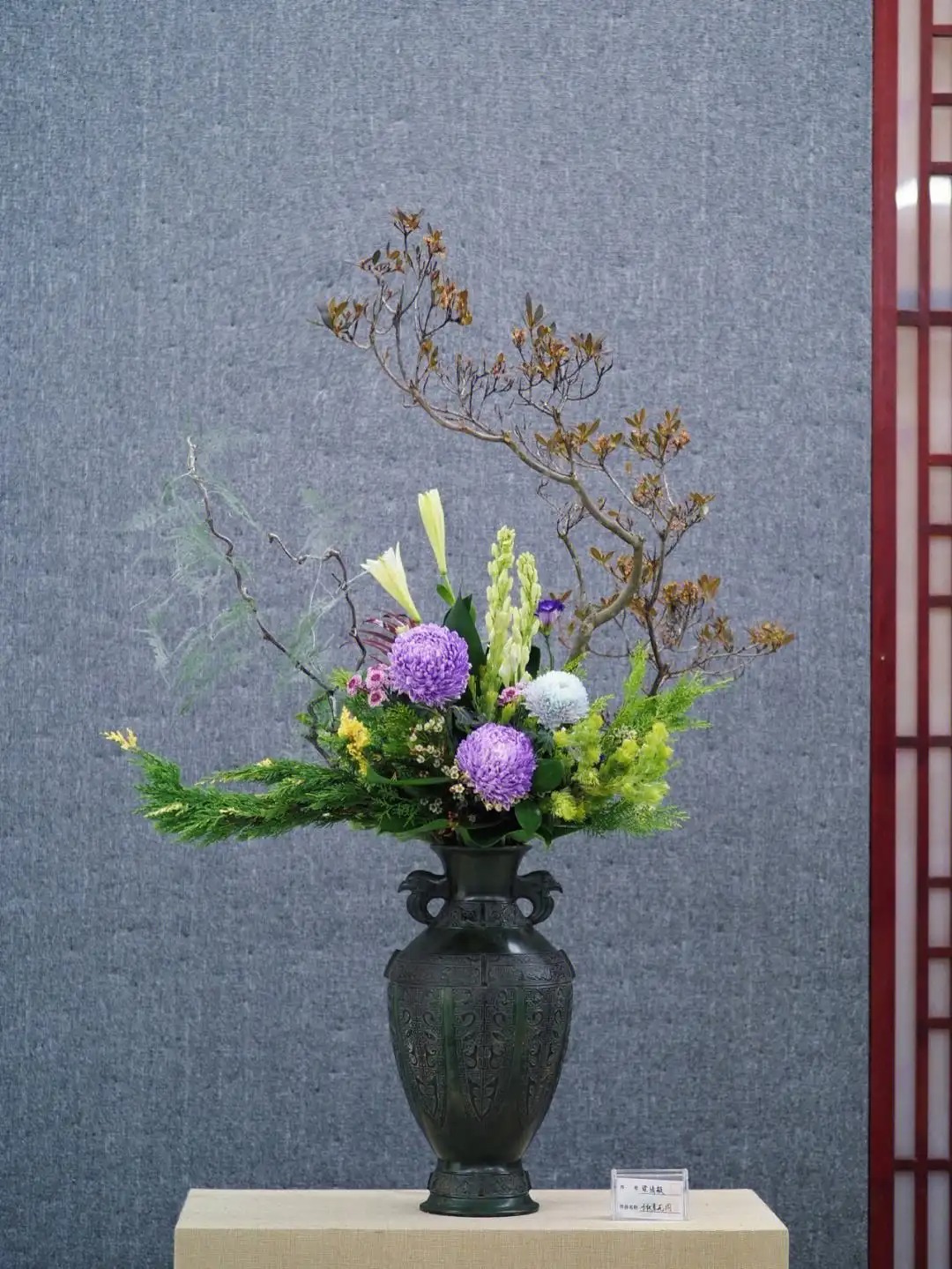
The traditional art of flower arrangement has always focused on the integrity of the picture and integrating it with the surrounding scenery.
Emphasis is placed on the harmony and unity of poetry, calligraphy, painting and flowers. For example, attention should be paid to the organic connection between flowers, the integration of containers and shapes, the use of stands and accessories, the matching of inscriptions, and multi-level appreciation methods (wine appreciation, fragrance appreciation, tea appreciation), etc.
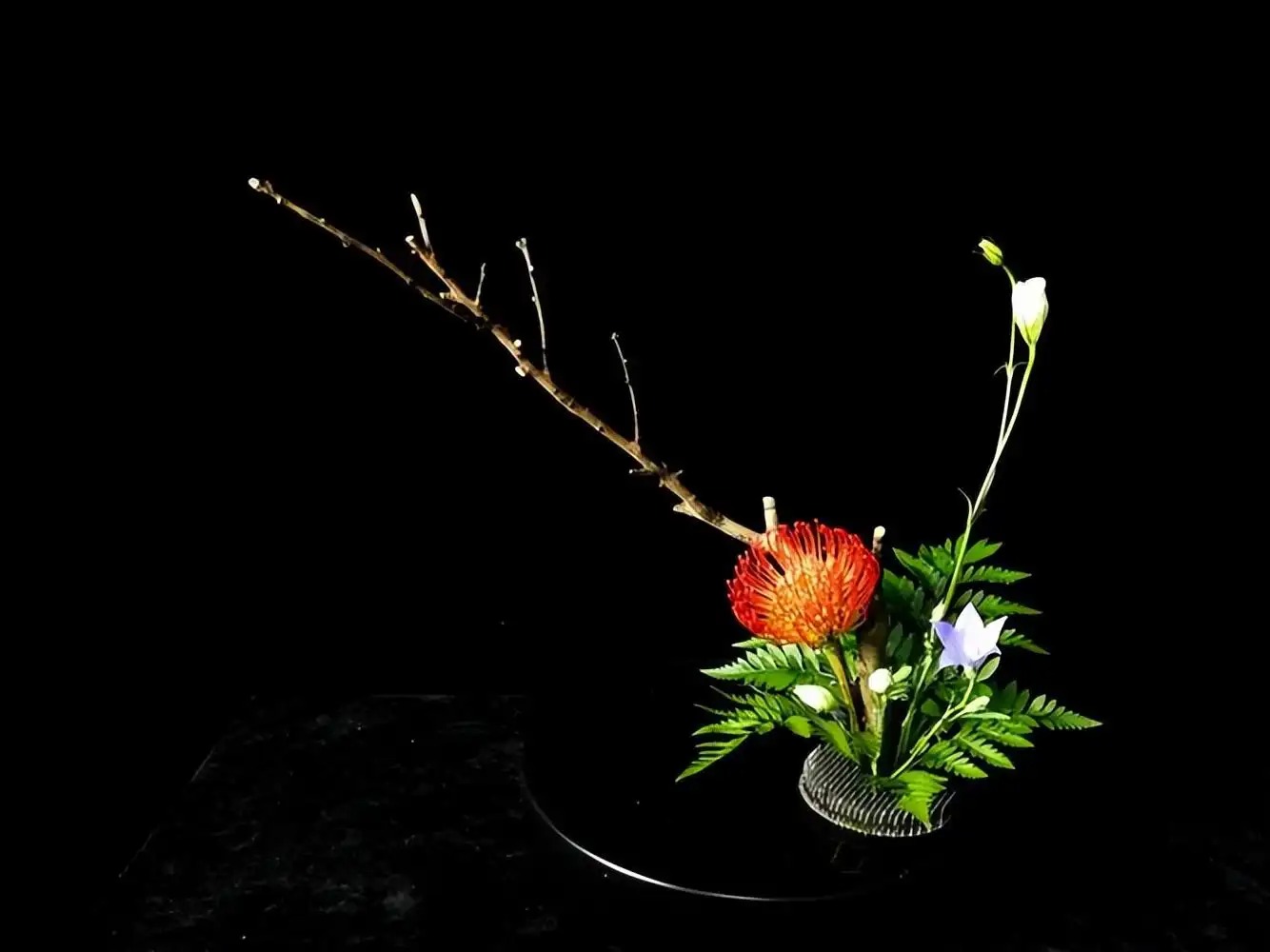
Conclusion
The art of oriental flower arrangement originated in China . The initial concept of flower arrangement started from the folk culture. It reached its peak in the Tang Dynasty, developed in the Five Dynasties, Song and Yuan Dynasties, reached maturity in the Ming Dynasty, and declined in the late Qing Dynasty. It has experienced a development process of more than 2,000 years.
Under the special political, economic and cultural background of each dynasty, traditional flower arrangement has developed into an independent art form , mainly including folk flower arrangement, temple flower arrangement, court flower arrangement, literati flower arrangement, etc.
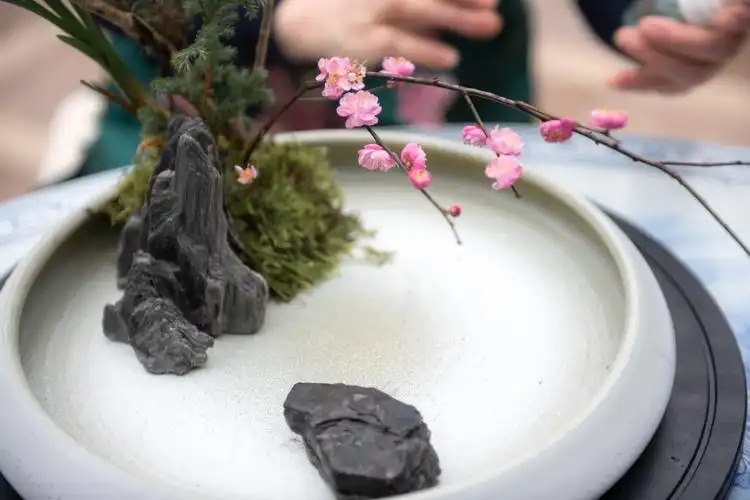
In the development process of traditional flower arrangement art, its artistic form was influenced by philosophy and religion, and its layout was influenced by Chinese painting and other art forms. It gradually developed an aesthetic concept of following the laws of nature and the unity of man and nature, and deliberately pursued a poetic realm, attached importance to the line drawing of the picture, and gave the picture a profound spirituality.
In short, after two thousand years of practice, traditional flower arrangement has established a relatively complete theory with distinctive characteristics, which has made important contributions to the development of Chinese and Western flower arrangement.
